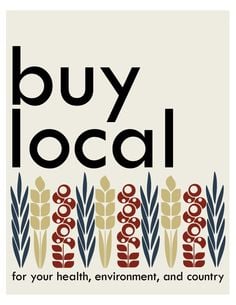 Farmers markets, small business week, craft fairs, community gardens and “staycations.” Communities across America and the UK are experiencing eyes turned inward as individuals take on a renewed interest in local products, services and events. It’s a trend that has the potential to build happier communities while promoting a stronger economy.
Farmers markets, small business week, craft fairs, community gardens and “staycations.” Communities across America and the UK are experiencing eyes turned inward as individuals take on a renewed interest in local products, services and events. It’s a trend that has the potential to build happier communities while promoting a stronger economy.
Why local?
We might trace the beginning of the trend to, somewhat paradoxically, globalization. In a world of Internet obsession and a constant influx of new ideas, individuals are trying to find their place. Many are turning to their immediate community. After all, the world might be vast, but local communities are unique and investing in them gives consumers a sense of belonging.
Barriers to local involvement
While it’s generally acknowledged that shopping local is worthwhile, there are a few factors that prevent involvement. First, local does not always cater to consumers’ aversion to inconvenience. According to a 2013 study by Mintel, 76% of adults are likely to visit locally-owned markets within walking distance of their homes, but only 57% are likely to visit ones that require any motorized transportation.
The second major barrier is a suspicion of other individuals in the community. In another study, Mintel found that 27% of subjects feel suspicion toward their neighbors, and a huge 59% never socialize with them. Consumers want improved communities, but are more comfortable contributing through indirect means, such as visiting the pastry shop down the street.
Making local easier
With these two barriers in mind, businesses should focus on making local products more accessible, especially in the food industry. One company that has made the leap to local is the fast-food chain restaurant Chipotle. Their “Food With Integrity” campaign emphasizes locally-sourced, sustainable ingredients. Customers receive the benefits of investing in local industries without the hassle of extra travel or higher prices.
Marketing local goods and events
It comes down to a balance between convenience and a sense of belonging to a community. In the same Mintel study mentioned above, 50% of respondents said they were likely to order products from local goods vendors online, but 89% said they were likely to purchase goods when they were sold in stores that they normally shopped. Physical stores are more attractive, as long as they are easily accessible.
To find out about local businesses, a Pew Research Center report says those under 40 will be likely to turn to the Internet. Those over 40 discover local businesses online as well, but are more likely to learn about them through newspapers.




